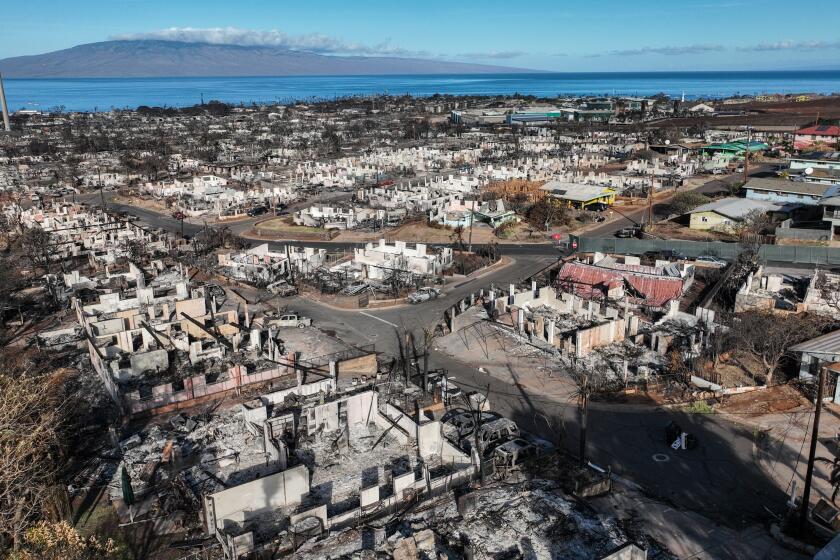Apodaca: The loss of local news reporting is a tragedy in the making

- Share via
I am frequently asked why the Daily Pilot is smaller and published less frequently than in times past.
I confess that such questions get my hackles up. The outstanding staff of this publication — and of its parent, the Los Angeles Times — consistently mount a remarkable effort, amid difficult conditions, to produce quality news reports. The implied criticism hits a raw nerve.
I usually respond by asking if they are a subscriber, and if the answer is no I tell them that this is part of the problem. News organizations — particularly local news outlets — are desperate for revenue from the advertisers and readers that they have long relied upon to remain financially viable, but who have largely migrated to social media.
For more than two centuries, print journalism existed as a linchpin of our democracy and a vital conveyor of information about our world and communities. Now this once-esteemed profession has a death rate so alarming some researchers have labeled it an “extinction-level” threat.
Newspapers in the U.S. are closing at the rate of two a week; if that pace holds, one-third will have vanished by 2025. The survivors are, with rare exception, severely diminished.
We now have “news deserts” — places where local coverage no longer exists — in thousands of communities across the nation. They are bone dry when it comes to coverage of city council meetings, police activity, schools, businesses, philanthropy and sports.
Alas, many people still seem unaware of or unconcerned about this devastating trend. Perhaps they haven’t yet realized that we are all paying a terrible price for the decline of legitimate journalism.
It’s no coincidence that as the traditional news model suffers a slow and agonizing death, the information vacuum is filled by online platforms that capture advertising dollars by leveraging targeted user data.
This is the really scary part. People are increasingly getting their information from social media: the social media that know you so well they bombarded you with ads that are eerily well-attuned to your preferences.
The fire in Maui is another wakeup call to Californians and other fire-prone areas to rethink the legacy of colonization and development, writes Patrice Apodaca.
We’re not just talking basic demographics. No, this is a creepy level of knowledge. They know what kind of shoes you like, if you color your hair or you’re considering traveling to Fiji; what you like to eat, what you look like, who your friends are, and if you have high blood pressure. And they know a lot about your political and cultural leanings.
All that discrete information is then used to engage and manipulate you. The “news” you receive through these platforms has been crafted specifically for you based on what you are already inclined to believe. They hook you by giving you what you want, and then they give you more. Down the rabbit hole you go.
This reliance on social media has made our society far more vulnerable to the spread of misinformation and disinformation, and it has exacerbated political and social polarization. To put it bluntly, it is tearing us apart.
I am, by nature, not a confrontational person. But I have lost track of the arguments I’ve engaged in with friends and family — people I care about — who are like the proverbial frogs that are unaware they are slowly being boiled. The stew they are immersed in is one of misleading reports, unsubstantiated assumptions, conspiracy theories, and, oh yes, outright lies.
Too many times I have winced at pronouncements such as “I’ve done my homework,” or “I consult multiple sources and form my own opinions.” These are typically code for someone going online and finding ideas that comport with their preconceived biases.
The reliance on social media, coupled with the decline of traditional news organizations, has also fed into a growing distrust of “the media” generally, as if reputable news organizations and sources of misinformation should be lumped together into one giant pot of deception and hypocrisy.
But there’s a huge difference between genuine journalism and the garbage that often masquerades as such.
Credible journalists make no claims to perfection, but they abide by standards, reporting on findings only after they have conducted research, consulted many sources, examined data and explored various viewpoints. They seek to learn, and to pass on what they learn, even if it runs counter to what they previously might have been inclined to think, and they are fact-checked and scrupulously edited.
Readers might not always feel comfortable with what journalists write, and certainly advertisers often don’t. But trained, experienced journalists are committed to reporting the news, even when it doesn’t sit easily.
That rigor is the polar opposite of the methods employed by those who disseminate propaganda, junk science and conspiratorial rumors — those who start with a conclusion and work backwards, buttressing their claims with dubious or fabricated evidence. Adding to the damage is the sad reality that real journalists must now spend much of their valuable time and resources correcting misinformation.
Solutions have been proposed, including government funding to prop up news organizations, and legislation that would curb online platforms’ use of user data and anti-competitive practices. Some news outlets are adapting by experimenting with new models. And increasingly there are calls for schools to step up and teach students how to identify and analyze misinformation on social media.
Will any of this help? Some, maybe, hopefully. We have no choice but to try. The disease that’s killing the news business has sickened our nation. It’s up to us to save it.
All the latest on Orange County from Orange County.
Get our free TimesOC newsletter.
You may occasionally receive promotional content from the Daily Pilot.







